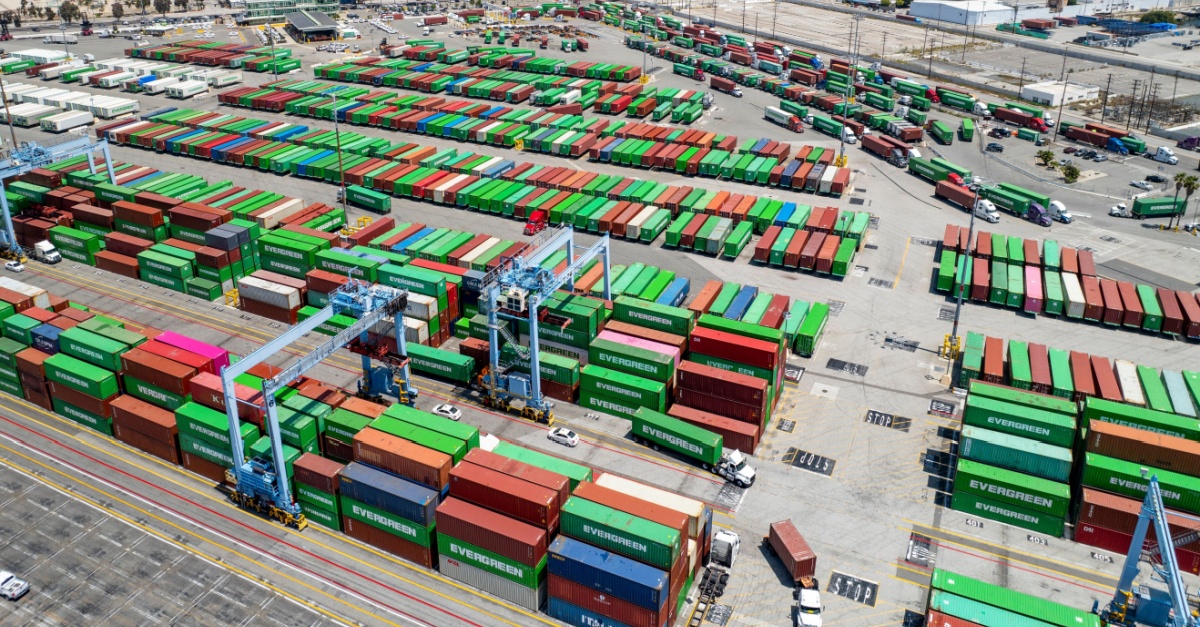The North American freight market is evolving, with the expanding presence of private truck fleets, the softening of U.S. imports, and the tightening of inland capacity. We’re looking at such key issues as the regulatory disruptions affecting driver pools, cost containment tactics from carriers, and the market dynamics influencing pricing stability into 2026.
Private Fleets Surge as Shippers Prioritize Control
Despite low for-hire trucking rates, U.S. shippers are increasingly relying on private fleets to gain operational control. According to the National Private Truck Council, private fleet shipments jumped 11.7% in 2024, although the total number of private fleets has grown 15.9% since late 2019, reaching over 776,000.
While traditionally used for outbound freight, private fleets now handle 43% of inbound shipments, marking a significant increase from 31% in 2022. Schneider and Penske leaders have confirmed that shippers are blending fleet types but gravitating toward in-house trucking for better reliability and tracking. Technology and visibility tools are playing a key role in this shift, despite ongoing low contract rates and rising fleet costs.
Truckload Prices Set for Modest Rebound in 2026
U.S. truckload contract rates are expected to edge up about 2% in 2026, while spot rates could rise 6% from 2025’s lows, according to Arrive Logistics’ latest forecast. Oversupply and subdued freight demand continue to suppress major rate hikes, leaving shippers in control of pricing. Meanwhile, carriers, struggling with inflation and higher operating expenses, say they need increases of 4-6% to maintain margins.
Yet, Arrive’s David Spencer noted that most shippers expect only minor adjustments, favoring cost efficiency. The firm’s data shows that August spot rates averaged $1.61 per mile, and contract rates averaged $2 per mile. With Class 8 truck orders down 21% year over year and ongoing capacity attrition, analysts foresee steady market conditions heading into 2026’s shipping season.
Fleets Brace for Extended Freight Weakness
Trucking executives are warning that the freight downturn could persist through 2026, forcing carriers to keep costs in check and adjust strategies. Speaking at the FTR Transportation Conference, Sam Anderson, CEO of Bay and Bay Transportation, said the company expects little market change in the next 12 to 18 months, even as operating costs have risen roughly 5% annually for three consecutive years.
Werner Enterprises’ Matt Parry predicted continued consolidation, noting that fleets with several hundred trucks face the most strain. Recent acquisitions by Republic Services, Kenan Advantage Group, and Nagle Cos. reflect this trend. While smaller fleets benefit from diesel prices remaining under $4 per gallon, Anderson said nearshoring operations in Mexico and Colombia are helping offset rising expenses and maintain competitiveness.
Regulatory Clampdown and Fees Tighten Drayage Squeeze
As import volumes fall, new pressure points are emerging across the drayage sector. ITS Logistics’ October index shows U.S. imports dropping to 2.12 million TEUs in September, a 6.8% year-over-year decrease. Ocean carriers are more aggressively enforcing accessorial fees, including detention and demurrage, while new CDL regulations targeting non-domiciled drivers are accelerating bankruptcies among small carriers.
Several drayage providers have already shut down. ITS has warned that these developments are reducing capacity and could ripple into terminal operations. Shippers are urged to review documentation protocols and SOPs for dispute resolution ahead of 2026 contract planning, especially where rail and ocean container movements intersect.
Falling Imports Trigger Inland Truck Capacity Imbalance
Weaker U.S. import volumes are triggering a trucking capacity imbalance in inland markets, driving up spot rates as fewer trucks return from ports. In early October, DAT data showed spot rates reaching $1.70 per mile nationally, with Midwest rates averaging $1.92. Chicago, Las Vegas, and Stockton lanes experienced sharp increases, with rates from Stockton to Los Angeles surging 33% year over year to $2.45 per mile.
The decline in import traffic is forcing more freight into the spot market, exposing capacity gaps in high-volume corridors. With imports projected to remain below 2 million TEUs for at least five months, this inland tightening may persist well into early 2026.
Navigate the Freight Market With Wicker Parker Logistics
In the midst of uncertainty, having an expert partner by your side is a no-brainer. That is what Wicker Parker Logistics offers.
Leveraging deep industry expertise, robust logistics and transportation technology solutions, and a consultative approach, the company offers on-demand transportation across various modes (FTL, LTL, flatbed, hot shot, and reefer), providing end-to-end visibility into every shipment. Contact us today for a quick quote.















